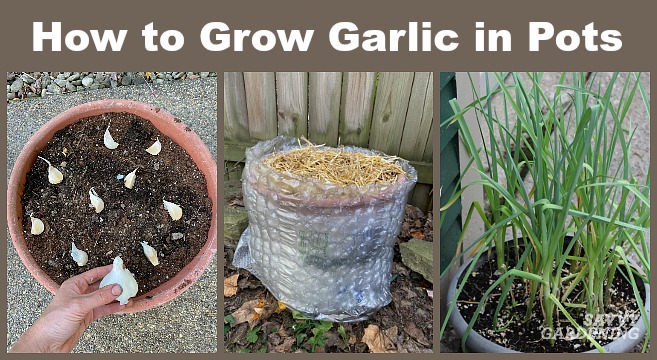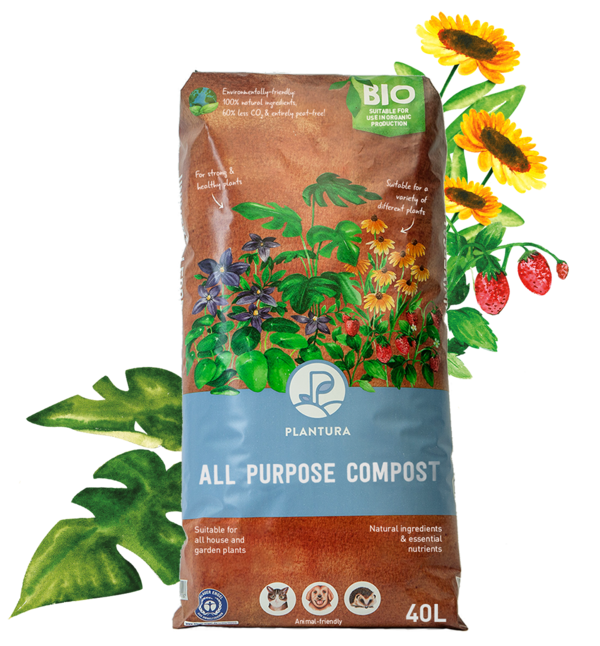Garlic is one of the most versatile companion plants for the vegetable garden Its pungent aroma deters a wide range of garden pests, while also attracting beneficial insects Plus, garlic improves the flavor and growth of many vegetable crops when planted nearby.
But what exactly can you grow with garlic? Let’s take a look at the top vegetable and herb companions for this beneficial allium.
Why Garlic Makes a Great Companion Plant
There are several reasons why garlic makes an excellent companion plant
-
Its strong odor repels many common insect pests like aphids, spider mites, cabbage loopers, onion flies, and snails.
-
It deters larger pests like rabbits and deer.
-
Garlic contains sulfur compounds that act as a natural fungicide when released into the soil, preventing fungal infections in nearby plants.
-
It takes up minimal space in the garden with its compact bulb and slender leaves.
-
Garlic matures quickly, making it a great choice for intercropping with slower-growing vegetables.
-
It enhances the flavor of many vegetables and herbs.
With benefits like these, it’s easy to see why garlic earns a spot in most gardeners’ companion planting schemes. Keep reading to discover the best fruits, vegetables, and herbs to grow alongside this allium ally.
Best Vegetables to Grow with Garlic
Many popular vegetables make excellent partners for garlic. Here are some of the top vegetable companions to consider:
Tomatoes: Garlic deters aphids, spider mites, and other pests that afflict tomatoes. It also improves tomato flavor. Plant garlic around the perimeter of your tomato patch.
Potatoes: Garlic helps control blight in potatoes. Intercrop garlic between potato hills.
Cabbage Family Crops (Broccoli, Cauliflower, Kale): Deters cabbage looper caterpillars, aphids, and other brassica pests. Plant garlic throughout beds.
Carrots: Repels the carrot rust fly. Grow alongside rows of carrots.
Beets: Helps control fungal diseases. Plus, many gardeners report improved beet flavor when garlic is planted nearby.
Onions and Leeks: Use garlic as a barrier plant to protect against onion fly maggots.
Spinach and Lettuce: Serve as living mulch for garlic, suppressing weeds and keeping soil moist. Direct sow around garlic plants.
Peas: Repels aphids. Grow garlic around pea trellises.
Cucumbers: Deters cucumber beetles. Use as a border plant.
Squash: Protects against squash vine borers. Plant at base of mounded hills.
Beans: Deters bean beetles. Don’t plant in same bed, as garlic stunts bean growth. Rotate planting locations from year to year.
Best Herb Companions for Garlic
Many culinary herbs also thrive when grown near garlic. Some great herb companions include:
Rosemary and Sage: Garlic deters spider mites, a common pest on these woody herbs. Plant near bases.
Dill: Improves garlic flavor and deters aphids. Interplant with garlic rows.
Cilantro: Repels aphids, spider mites, and caterpillars. Plant throughout cilantro beds.
Chives: Helps protect against fungal diseases like downy mildew. Grow chives as edging plants around garlic.
Thyme: Enhances essential oil production. Use garlic as a border plant around thyme.
Chamomile: Boosts garlic flavor. Direct sow seeds around mature garlic plants.
Mint: Deters cabbage moths, ants, aphids, and flea beetles. Scatter garlic in mint beds.
Getting the Most Out of Garlic Companion Planting
Follow these tips to maximize the pest-repelling, flavor-enhancing power of garlic in your garden:
-
Plant garlic in the fall 2-3 weeks before first frost for best results. This allows roots to establish before winter dormancy.
-
Choose hardneck garlic varieties, which produce more sulfur compounds compared to softneck types.
-
Separate garlic plants by approximately 6 inches to allow adequate space for growth.
-
Scatter garlic throughout vegetable beds for general pest protection. Also plant in a concentrated perimeter around crops susceptible to specific pests.
-
Crush a couple cloves of garlic and steep in water overnight to make a natural pest-repellent spray.
-
After harvesting bulbs, leave some plants in the ground to continue deterring pests throughout the summer.
-
Save and replant some of your best garlic bulbs in the fall to select for plants with the strongest odor over time.
What Not to Plant with Garlic
While garlic makes a helpful companion for many garden crops, there are a few exceptions:
Legumes (beans, peas): Garlic stunts legume growth. Rotate planting sites each year.
Asparagus: Garlic may inhibit asparagus spear production. Keep separate.
Parsley and Sage: Garlic can reduce growth. Avoid planting together.
With a little forethought and strategic planting, you can harness garlic’s full potential to deter pests while boosting the flavor of your vegetables and herbs. Embrace this aromatic allium as a small but mighty companion in your garden.

You want to know who’s behind Plantura?


With a passion for growing installed at an early age, I have always been happiest outdoors in nature. After training as a professional gardener and horticultural therapist, I currently run horticultural therapy and community kitchen gardens in the UK, helping others access the many physical and mental health benefits of growing vegetables, fruit and plants. Favourite fruit: apples and pears Favourite vegetable: asparagus
Growing garlic with other plants can help protect against some pests and diseases. However, not all plants like to be grown with garlic as it can also have a negative effect.

Practised for thousands of years, companion planting or intercropping is the process of growing certain plants alongside each other for their mutual benefit. Read on to discover what plants are good companions for garlic and those that should not be grown together.
Garlic companion plants
As a key kitchen ingredient, garlic (Allium sativum) is widely available in most food shops. However, you can also grow garlic at home and reap the benefits it can have for the rest of your garden. For example, growing certain plants with garlic can help keep weeds and maggots at bay and even improve the garlic’s flavour. Furthermore, growing garlic with other crops can reduce pests such as aphids (Aphidoidea), spider mites (Tetranychidae) and slugs and snails (Gastropoda) as well as encourage pollination.
The practice of companion planting has many benefits [Photo: nieriss/ Shutterstock.com]
As with many other vegetables and ornamentals, garlic prefers to be grown in a sunny position on light and nutrient-rich soil that is neutral to alkaline. Our Plantura Organic All Purpose Compost has a pH of 6 to 7.5 and contains the essential nutrients and minerals to support the garlic’s growth. However, if space is at a premium, you can also grow garlic in pots.

- Perfect for all your house, garden & balcony plants
- For strong & healthy plants as well as an active soil life
- Peat-free & organic soil: CO2-saving composition
Companion Planting Garlic
FAQ
What should you not plant next to garlic?
-
Legumes (peas, beans):These can struggle when planted near garlic, potentially leading to stunted growth.
-
Other Alliums (onions, leeks):Planting garlic near other alliums can lead to a build-up of soil-borne pests and encourage onion flies.
-
Delicate-tasting crops:Garlic’s strong aroma and flavor can negatively affect the taste of delicate crops.
-
Other plants to avoid:Asparagus, chives, parsley, sage, and spring onions can also suffer when planted near garlic.
What should you not plant after garlic?
You can plant a plethora of different crops after garlic – just make sure you steer clear of any other alliums like leeks or onions.
What grows when you plant garlic?
Unlike vegetables grown from seeds or plants, garlic is grown from single cloves — the same cloves you use in cooking. Each clove grows into a full head. Prep cloves by hand right before planting time — and invite friends to help. It’s a great excuse for a garden party with a garlic menu!
Does planting garlic keep pests away?
-
Natural Deterrent:Garlic is a popular companion plant because it takes up little space and can grow in most conditions.
-
Pest Repellent:Garlic’s strong odor and the compounds it releases, like allicin, are known to deter various pests, including aphids, beetles, caterpillars, mites, and even some nematodes.
-
How it Works:The strong smell of garlic masks the scents that attract pests to plants, making them less likely to approach or feed on the plants.
-
Companion Planting:Planting garlic alongside other plants can help protect them from pests, acting as a natural barrier.
-
Examples of Plants that Benefit from Garlic:Garlic is a good companion plant for tomatoes, fruit trees, potatoes, cabbages, broccoli, cauliflower, kale, and carrots.
-
Garlic Spray:You can also make a natural garlic spray by crushing garlic and mixing it with water, which can be used to deter pests.
-
Caution:While garlic is a natural pest repellent, it can also be harmful to certain beneficial insects and pollinators, so use it with caution and consider the potential impact on your garden ecosystem.
-
Other Uses:Garlic can also be used to repel moles, voles, and gophers by placing crushed garlic in their tunnels or using garlic water as a deterrent.
